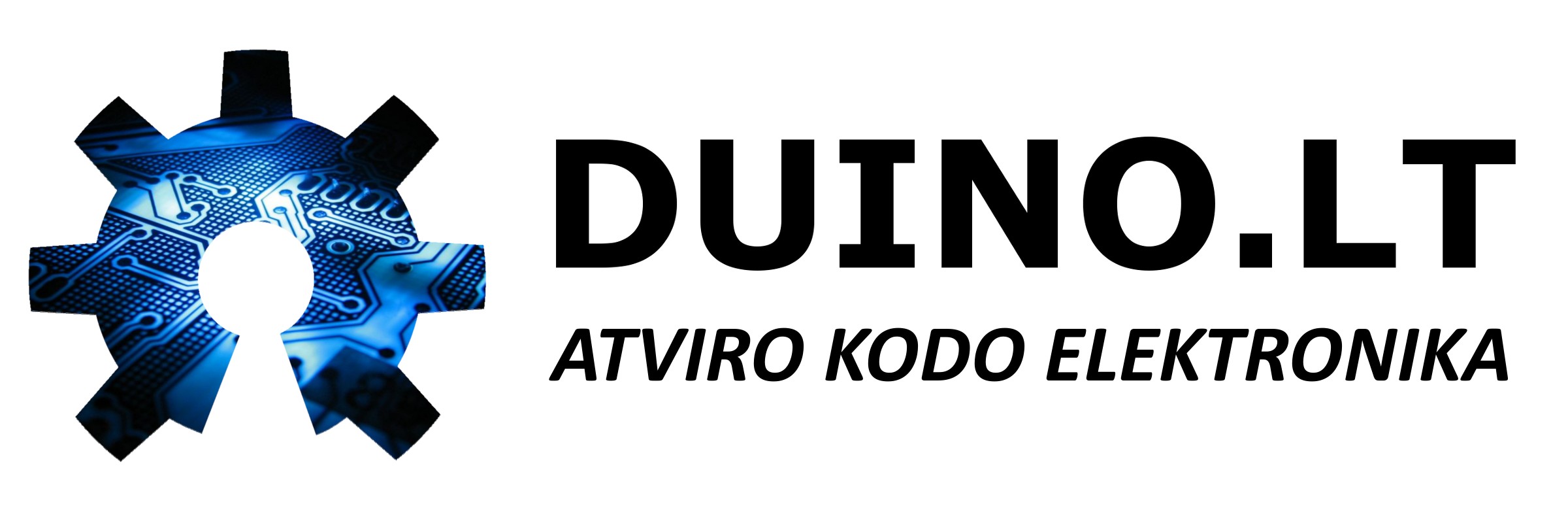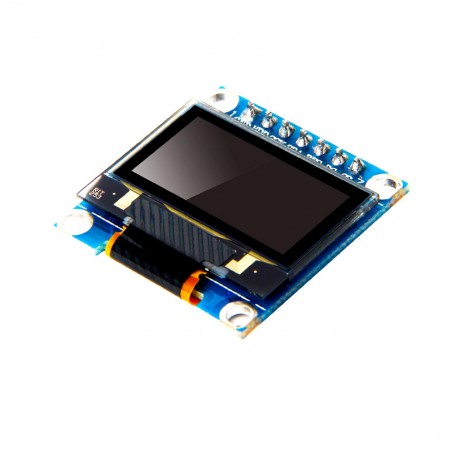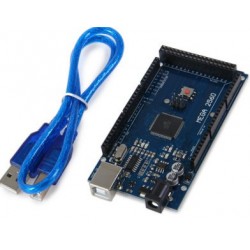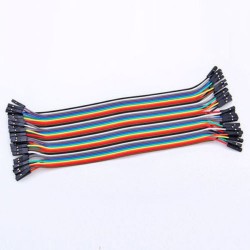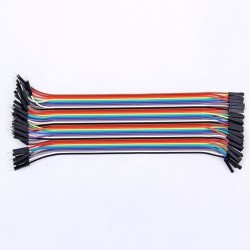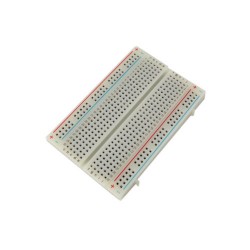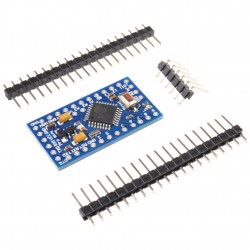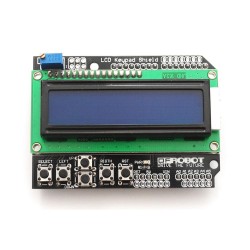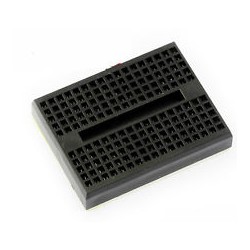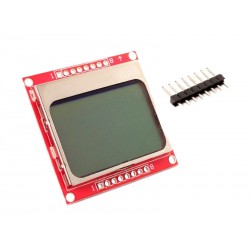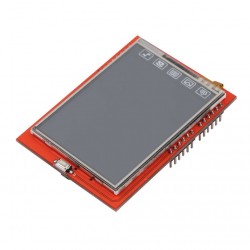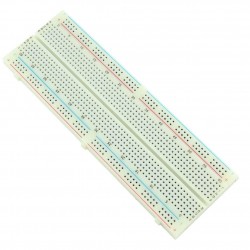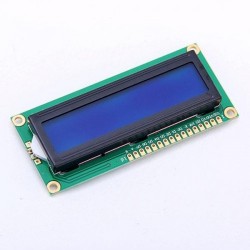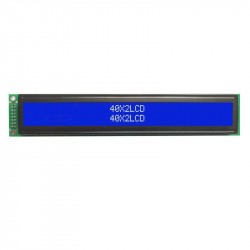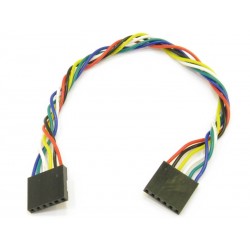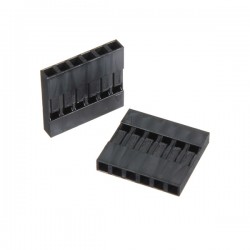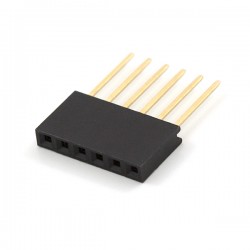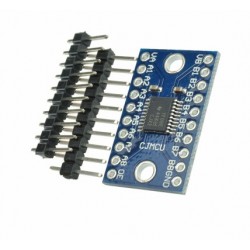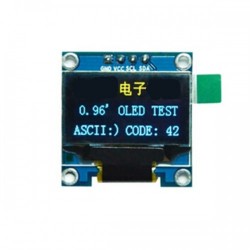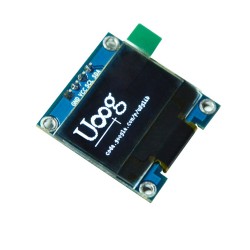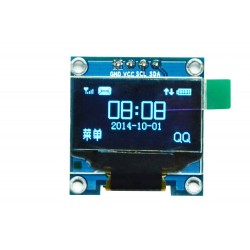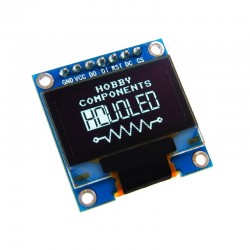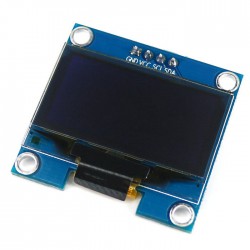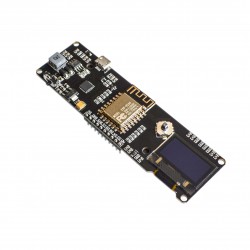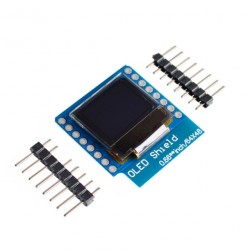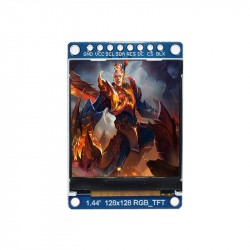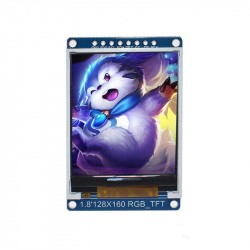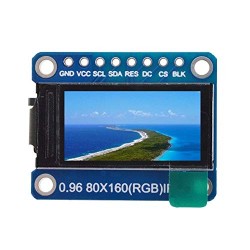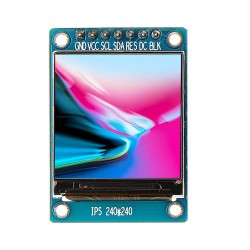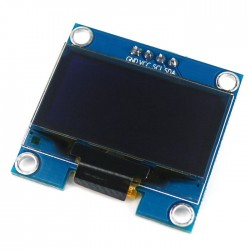Prekių nėra
(Kainos su PVM)
Tik internetu
Grafinis 128x64 0,96" mėlynas OLED ekranas (SPI/I2C versija)
d0689
Nauja prekė
Grafinis mažo skersmens, bet geros rezoliucijos ekrano modulis. OLED technologija yra pranašesnė už LCD dėl to, kad kiekvienas pikselis yra atskiras šviesos šaltinis. Puikiai tiks nedidelių gabaritų Arduino sistemoms.
Prekių kiekis mūsų sandėlyje: 4
Charakteristikos
| Suderinama su Arduino™ ir *duino | Taip |
| Nominali darbinė įtampa | 3,3V |
| Maitinimo įtampa | 3-5V (DC) |
| Jungties žingsnis | 2,54mm |
| Jungties tipas | Male (vyr.) |
| Kontaktų kiekis | 7 |
| Matmenys | 27 x 27 x 11 |
| Komunikacijų sąsajos | I2C |
| Spalvos | Mėlyna |
| Naudojami mikrovaldiklio prievadai | 3-4vnt. (SPI) arba 2vnt. (I2C) |
| LCD dydis | 128x64 0,96" |
| Pagrindinės funkcijos grandynas | SSD1306 |
Apie prekę
What is OLED?
OLED (Organic Light-Emitting Diode) is a self light-emitting technology composed of a thin, multi-layered organic film placed between an anode and cathode. In contrast to LCD technology, OLED does not require a backlight. OLED possesses high application potential for virtually all types of displays and is regarded as the ultimate technology for the next generation of flat-panel displays.
How Does OLED Emit Light?
OLEDs basic structure consists of organic materials positioned between the cathode and the anode, which is composed of electric conductive transparent Indium Tin Oxide (ITO). The organic materials compose a multi-layered thin film, which includes the Hole Transporting Layer (HTL), Emission Layer (EML) and the Electron Transporting Layer (ETL). By applying the appropriate electric voltage, holes and electrons are injected into the EML from the anode and the cathode, respectively. The holes and electrons combine inside the EML to form excitons, after which electroluminescence occurs. The transfer material, emission layer material and choice of electrode are the key factors that determine the quality of OLED components.
Features:
- No backlight, the display unit is self-luminous
- LED colour: blue
- High resolution: 128 * 64
- Viewing angle:> 160 °
- Supports many control chip: Fully compatible with Arduino, 51 series, MSP430 series, STM32 / 2, CSR chip, etc.
- Ultra-low power consumption: full screen lit 0.08W, 0.06W normal full-screen display of Chinese characters
- Wide voltage support: without any modification, directly supports 3V ~ 5V DC
- Working temperature: -30 ℃ ~ 70 ℃
- Module volume (generous): 27.0MM * 27.0MM * 4.1MM
- Minimum occupancy on Earth IO port display: The IIC/I2C communication, as long as the two IO ports will be able to drive!
- Driver IC: SSD1306
- No font: take the word with modulo software
I2C/SPI configuration always demands helpful resources as in any case. For the SPI setup, the module comes in 4 wire SPI configuration by default and to make it work with the arduinos you can use these libraries from Adafruit.
For the I2C setup it demands a little bit of work on the module. Actually it was one of our customers who shared these simple configuration steps with us, start with resoldering the resistor from position R3 to R1 and then short the R8 resistor with some solder tin (0 Ohm resistor). The R6 and R7 pullup resistors are already soldered, nothing to do there. Once done, the module is ready for I2C communication! The CS Pin is not necessarily needed, so just connect it to GND. The DC Pin selects the address. For standard address wire it to GND. The RES-pin needs a low pulse at startup and high voltage during operation (as in SPI mode), a 100nF capacitor to GND and a 10k res to VCC would be ideal!
Atsiliepimai
Šiuo metu klientų atsiliepimų nėra.
